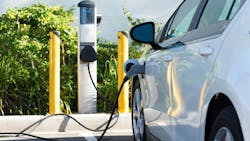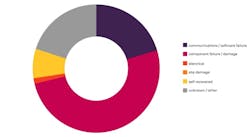Assessing the Reliability of EV Charging Infrastructure
The nation’s electric vehicle (EV) charging station model may be suffering the consequences of a “cart-before-the-horse” approach to growth.
Even as efforts to expand the nationwide charging network ramp up with more urgency, performance and reliability of existing facilities are growing concerns that compound the driver “range anxiety” issue that dogs the EV market.
Evidence is mounting that more drivers are encountering charging stations that aren’t fully operational. They’re finding chargers on site that don’t perform as expected: units slow to engage; ports physically broken or otherwise impaired; interrupted charging sessions; extended downtime; and incomplete charging. In worst case scenarios, drivers with run-down batteries are left stranded or frantically searching for operable ones nearby. Those experiences may be giving current EV owners buyer’s remorse and would-be owners pause.
The situation has sparked a flurry of research into the sources of problems, increased attention to station operation/maintenance, and even a government-funded effort to repair or improve existing stations. The actions appear to reflect a growing realization that the fundamental EV charging network concept remains a work in progress, with core issues that will have to be resolved if the grand vision for EVs is to be fulfilled.
One recent analysis examining EV charging station performance based on collected data finds no clear answer to why charging problems exist. In its latest annual charger reliability and driver experience report Los Angeles-based ChargerHelp, a services provider to EV charging station operators, spreads the blame for downtime and failed charge sessions around.
Looking at observed symptoms of “down” charging ports, damaged or failed physical components such as interactive screens and cables and connectors topped the list. But there was also a high correlation with payment system issues traceable to communications and software glitches. Together, they accounted for two-thirds of symptoms. Notably, the study found scant evidence linking “electrical problems” or “site damage/vandalism” to inoperability (see Figure).
While faulty electrical connections were downplayed by ChargerHelp as primary sources of charging port failure, research into that aspect of charger performance is nevertheless underway.
Suspecting voltage shifts could play a role in charger failures and resultant downtime, especially as the grid becomes more stressed, researchers at the U.S. Department of Energy’s Oak Ridge National Laboratory have developed workarounds to charging port components that manage power flow.
According to an April ORNL news release, a research team developed a “ride-through control algorithm” that can quickly restore power to a charging port that stops delivering juice or shuts down entirely when a key internal, its power electronic converter, detects a grid fault. The team created another algorithm that allows the converter to detect and respond to an internal failure of its three-power module set that converts and controls charging power. If one module goes down, the algorithm allows the other two to continue operating, enabling continued charger operation at lower power until maintenance restoring full operation could be performed. Yet another team advance was a design for a charging station controller capable of monitoring individual ports and adjusting charging infrastructure settings and operation in the event of a single-point failure.
As charging system performance issues grow along with the aging of legacy infrastructure, demand for maintenance, repair and improvements to existing infrastructure is growing. A headline effort to address that is the U.S. Joint Office of Energy and Transportation’s plan to foster repair and upgrade of some 4,500 charging ports.
The government agency is spreading $150 million around to scores of grant recipients in a bid to bolster the public charging infrastructure, 5% of which the U.S. Department of Energy says is temporarily unavailable at any given time. The first project in the Electric Vehicle Charger Reliability and Accessibility (EVC-RAA) program, which targets locations with a broken or non-operational publicly available chargers, got underway in August. It will triple port charging speed and allow simultaneous charging at four ports. More that have been awarded grants are now in the pipeline.
The repair program is an example of one element of a multi-faceted approach the ChargerHelp report says is needed to improve the reliability of EV charging.
“Dedicated funding for legacy and new infrastructure is crucial to maintain overall network reliability and uptime, especially as EVSE buildout accelerates and existing charging stations risk getting left in the proverbial rearview mirror.”
About the Author
Tom Zind
Freelance Writer
Zind is a freelance writer based in Lee’s Summit, Mo. He can be reached at [email protected].

